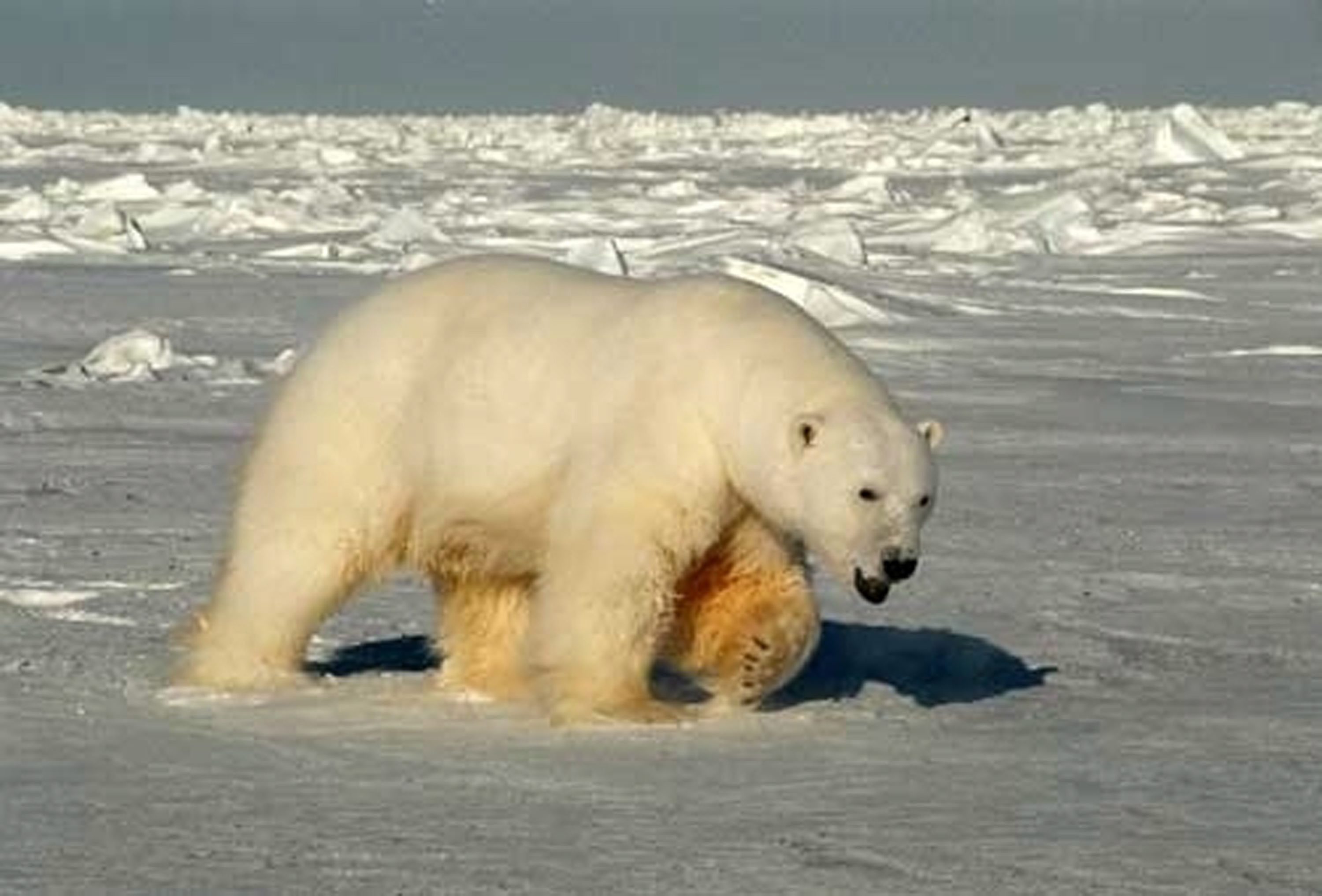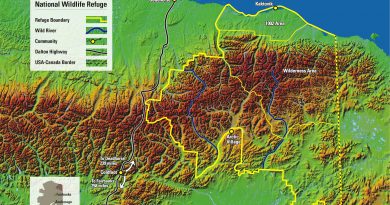Beaufort Sea polar bears are spending more time ashore

As Arctic sea ice dwindles, polar bears are spending more time on land. Now a long-term study tracks the dramatic change in behavior over the recent warming in the Beaufort Sea off northern Alaska and northwestern Canada.
Polar bears in the beleaguered southern Beaufort Sea population are now three times as likely to come ashore in summer and fall as they were in the mid-1980s, according to the study, by scientists from the U.S. Geological Survey, the U.S. Fish and Wildlife Service and two universities. The bears that come ashore are also staying there much longer than bears did in the past, according to the study.
The big changes, the study found, have happened over the past decade and a half — corresponding to big reductions in summer and fall sea ice.
“That’s where we found a turning point in the data series. Prior to 2000, there really was no trend,” said Todd Atwood, a USGS wildlife biologist and the study’s lead author.
Increased open-water
Since the late 1990s, the open-water season in the southern Beaufort Sea has expanded by 36 days on average, and polar bears have responded in kind, said the study, published online in the journal PLOS ONE. Since that time, the study said, the polar bears that swim to shore are spending 31 more days a year there.
Before then, the polar bears that went ashore in the late summer and fall tended to make brief exploratory forays, not the extended stays that are happening now, Atwood said.
The study uses data from movements of 228 adult female polar bears that, over the period from 1986 to 2014, were fitted with 389 radio collars. Only adult females can wear the tracking collars; males’ necks are too wide to allow collars to stay in place.
The study also uses data from aerial surveys conducted from 2010 to 2013. Those surveys tracked all polar bears — male and female, adult and subadult.
Swim north or swim south?
The newly open Beaufort Sea water, a trend continuing this year, is forcing polar bears in summer and fall to make a choice — swim north to the receding edge of the pack ice, or swim south to land, Atwood said.
The bears that come ashore still make up only a minority of the population, but they may be making the better choice, Atwood said. They seem to be making a beeline for piles of meat- and blubber-laden bones left after local Inupiat hunters butcher bowhead whales on the beaches, according to scientists’ data.
The bowhead “bone piles” near the village of Kaktovik are now autumn gathering spots for polar bearsand even some North Slope grizzlies. The piles give the bears a source of high-fat food that the bears on the ice — which now retreats well north of the prime foraging grounds over the continental shelf — are lacking, Atwood said.
“The way things are now with the bone pile, it’s probably a good idea to come ashore,” he said.
Yet unknown is whether the bears feasting at the bone pile are getting year-round advantages, Atwood said. Do they have better body condition? Are mother bears that eat bowhead scraps more likely to have surviving cubs the following spring?
“That’s the next question. That’s the next aspect of the work,” he said.
Also unknown is the long-term effects of the bears’ reliance on the bowhead bone piles.
Bear patrols
There are some worrisome possibilities, especially if it happens that there are not enough bowhead scraps to go around, Atwood said.
“You can get in trouble once that bone pile is depleted,” he said. The bears might smell whale meat in villagers’ houses and follow their noses there, he said.
“It’s just natural for them to go where they smell that food,” he said.
Already, locals in Kaktovik have organized bear patrols to protect villagers in the season when polar bears gather at the bone pile.
“There’s risk anytime you’ve got large numbers of large carnivores anywhere in close proximity to people,” Atwood said.
Poor condition of Beaufort Sea bear population
The southern Beaufort Sea population, one of 19 polar bear population groups around the Arctic, is one of the best-studied, Atwood said. Satellite-based tracking of the animals goes back to the 1980s, and there was presatellite radio tracking even before then, he said. The only other long polar-bear research record is in Canada’s Hudson Bay, he said.
The trend toward more bears spending more time on land has been documented around the Arctic, including in the healthier Chukchi Sea population that roams between Alaska and Russia. Many of the land-bound polar bears go without food, while some — particularly in the Hudson Bay region — have been eating alternative food sources like eggs, birds and plants.
Despite their access to bowhead whale scraps each autumn, the southern Beaufort Sea polar bears are showing more trouble signs than several other populations. Numbers dropped by 40 percent in the first decade of the 21st century, with few cubs surviving in many of those years, recent research shows. The southern Beaufort Sea polar bears have lower weight, worse body condition and poorer cub survival than their Chukchi counterparts, and they have been hit by a recurring disorder that causes them to lose their heat-insulating hair.
The condition of polar bears in the Beaufort Sea and elsewhere will be among the subjects discussed at the 24th International Conference on Bear Research and Management, to start on Sunday.
Related stories from around the North:
Canada: Polar bears forced to swim long distances as Arctic ice melts, Radio Canada International
Finland: Finland’s bears are on the move, Yle News
Russia: Russian oil company studies polar bears, Barents Observer
Sweden: Petition to restrict brown bears in North Sweden, Radio Sweden
United States: Small grizzlies dominate bigger polar bears: study, Alaska Dispatch News



